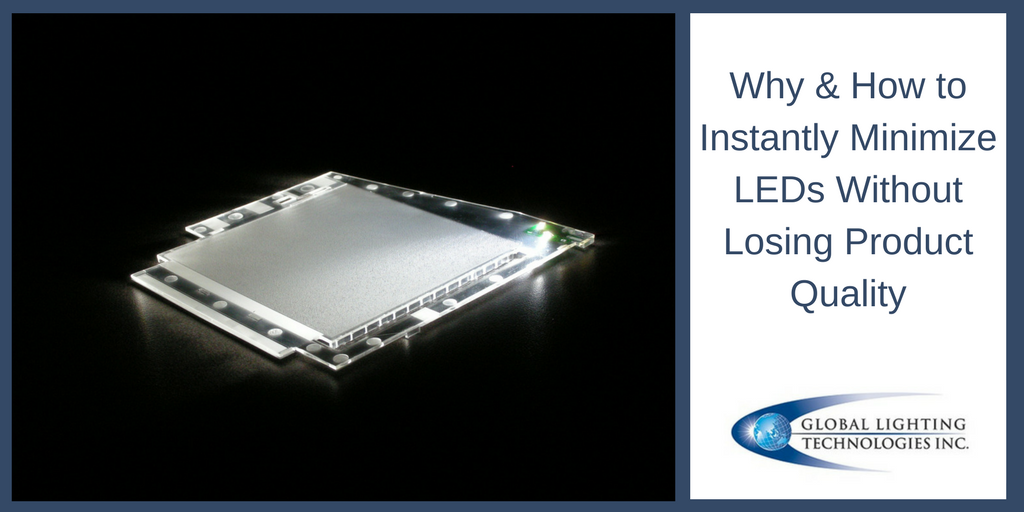Why & How to Instantly Minimize LEDs Without Losing Product Quality
There are many ways to keep costs down while designing and manufacturing a product without negatively impacting the final quality. In fact, when done properly, many steps towards efficiency can actually lead to superior end results.
Let’s discuss some reasons why minimizing the number of LEDs in custom lighting solutions may be a smart decision, and how it’s possible to accomplish this goal.
The most obvious reason to reduce the number of LEDs being incorporated is for cost savings. Fewer LEDs leads to a decrease in costs. The assembly may also then require fewer materials which further reduces costs, such as a design with fewer LEDs requiring a smaller PCB, less traces, smaller connectors with less electrical paths, and other savings. By reducing the number of LEDs and properly positioning them, we also free up real estate within the product.
Beyond the actual LEDs themselves, consider their drivers. More LEDs used will require drivers with a greater number of channels, while fewer will require less. In many instances power can be saved, allowing smaller batteries to be used, or the same battery to achieve longer life.
Keep in mind that with any type of system, the more components it has, the greater the chance of failure occurring due to the failure of a single component. By reducing LEDs and their corresponding components we therefore reduce the overall likelihood of system failure.
Clearly, there are some compelling reasons to minimize the number of LEDs in a new system. Now, how can this be done properly?
The answer really lies with increasing efficiency of the lightguide system. By doing this, it’s possible to get more from less while still enjoying all of the cost-saving benefits mentioned above.
A significant way is to take advantage of more efficient light extraction technology. Strict quality control when manufacturing optically designed light extraction features leads to higher efficiencies and better uniformity. Further, by using highly transmissive materials, light loss due to absorption is reduced.
Another way to accomplish this is by increasing the efficiency of the coupling of the LED to the lightguide. This can be achieved through various techniques including the addition of optical lenses and proper polishing of the surface.
When the optical system itself is properly designed, including the light extraction features and coupling surface as well as other areas of the design, good uniformity can also be achieved from as little as a single LED.
These are just a few of the specific design steps and strategies that can lead to increased efficiency, enabling fewer LEDs to be used, and all of the aforementioned benefits to be realized. It’s this type of cutting-edge technology that Global Lighting Technologies specializes in.
Global Lighting Technologies is a worldwide leader for developing custom lighting solutions for a range of industries. Contact us here for more information on our products and services, and how we may be able to help with your LED edge lighting, LCD backlighting, or numerous other illumination needs.
